Case Study
Al-Mazad | Product Development
Explore AlMazad's Features
Explore the attached document for an in-depth look into AlMazad’s features
Project Overview
1- Role and Duration
- Jan 2021 – August 2021 : UIUX Designer
Designing intuitive user interfaces (UI) and ensuring a seamless user experience (UX) to enhance overall usability to meet business objectives and drive customer satisfaction.
- August 2021 – Jan 2022 : Product Manager
Leading cross-functional teams, defining product strategy, and overseeing the entire product lifecycle to deliver innovative, user-centric digital solutions that meet business objectives and drive customer satisfaction.
2- Scope and Constraints
In my role as UI/UX designer for AlMazad, I navigated the challenges of a tight timeline and limited budget to develop a pioneering online auction platform in Sudan. Crafting an intuitive and visually appealing interface, I focused on creating a seamless user experience. The platform enables business owners to establish free stores and facilitate fair-priced product sales through an efficient auction process. As the project evolved, I transitioned to Product Manager, adapting to changing scopes and ensuring the strategic alignment of the product with market needs.
3- Project Summary
Al-Mazad, the first online auction platform in Sudan. The primary goal of the project is to establish a dynamic digital marketplace, allowing business owners to create free stores and conduct fair-priced product auctions. Al-Mazad aim to introduce and promote the concept of online auctions in a market where such platforms are relatively uncommon. The key challenges tackled include creating user-friendly interfaces to bridge the technological gap, fostering trust in the online auction process, and promoting the adoption of digital commerce practices in a region with limited exposure to such concepts.
4- The Problem
Real Challenge:
The market in Sudan faced a significant obstacle – the absence of a technology culture hindered the adoption of online commerce, particularly for business owners. The purpose of the Al-Mazad project was to overcome this challenge by creating the first online auction platform in Sudan, facilitating business owners in showcasing and selling their products. The user problems within the current design included a lack of user-friendly interfaces that accommodated those less familiar with technology, potentially limiting their engagement. The business problem at hand was the need to establish a digital presence for local businesses amid the prevailing technological constraints.
Initial Problem Discovery:
The initial challenge revolved around the absence of a technology culture in Sudan, posing difficulties in crafting an online auction platform for Al-Mazad.
Problem Statement:
“How might we create an accessible online auction platform for Al-Mazad that resonates with a diverse user base in Sudan, considering the unique challenges presented by the limited technology culture?”
Initial Research and Problem Validation:
The problem directly impacted business owners in Sudan who struggled to adopt online commerce due to technological barriers. Addressing this problem was crucial for fostering economic growth, encouraging digital adoption, and providing a platform for business owners to thrive in the evolving market landscape. The problem mattered as it aimed to bridge the technology gap, empower local businesses, and contribute to the digital transformation of commerce in Sudan.
Goals
1- Business Goals
- Market Entry and Expansion: Establish AlMazad as the pioneering online auction platform in Sudan, tapping into the untapped market of business owners looking to enter the digital commerce space.
- Revenue Generation: Create a sustainable revenue stream through the platform by attracting businesses to set up free stores and facilitating fair-priced product auctions.
2- Product Goals
- User Adoption and Engagement: Foster high user adoption by designing an intuitive platform that accommodates users with varying levels of technological familiarity, ensuring sustained engagement.
- Positive User Experiences: Prioritize positive user experiences to build trust and encourage frequent participation in auctions, ultimately contributing to the success of the platform.
3- Business Opportunities
- Market Dominance: Being the first online auction platform in Sudan presents the opportunity to establish market dominance and become the go-to platform for local businesses.
- Partnerships and Collaborations: Explore partnerships with local businesses, payment gateways, and logistics services to create an ecosystem that supports and enhances the overall user experience.
- Digital Transformation Facilitation: Leverage the project to contribute to the digital transformation of commerce in Sudan, providing businesses with a platform to thrive in the evolving digital landscape.
Design Process and Product Management Journey at AlMazad
As UI/UX Designer
1- Problem Framing
- Initiation: Spearheaded collaborative sessions to understand stakeholder goals and define challenges in introducing Sudan’s online auction platform.
- User-Centric Approach: Prioritized user needs, crafting designs that resonate with a diverse user base, considering the technology gap in Sudan.
2- Exploration and Iteration
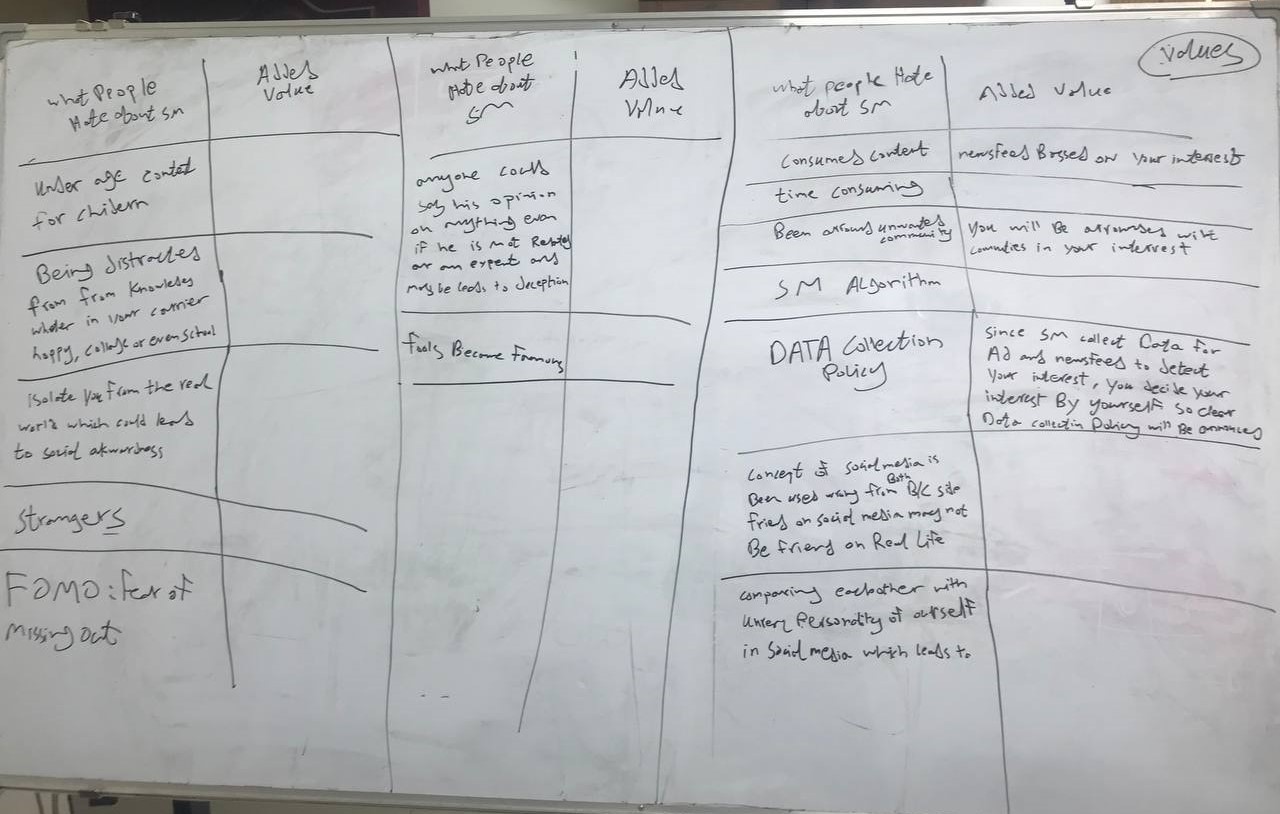
Broad Ideation
Engaged in brainstorming sessions, fostering creativity to explore various design concepts.
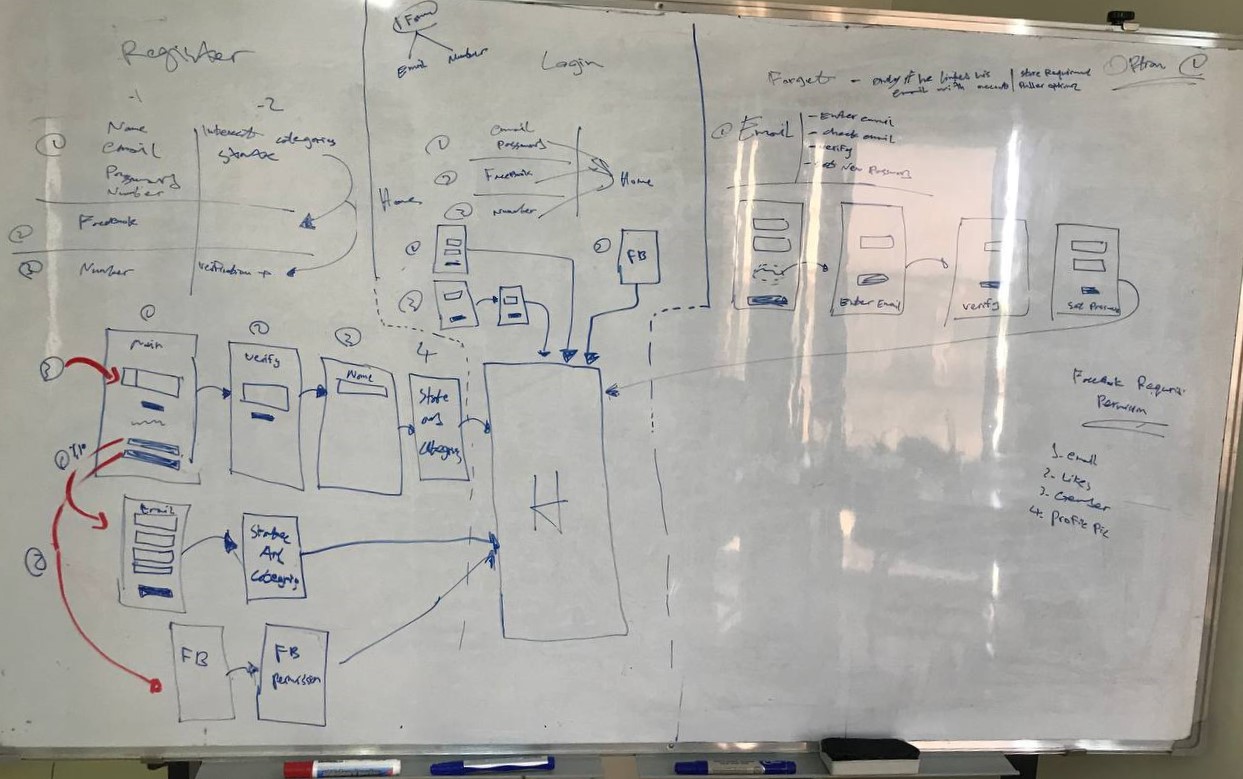
Prototyping and Testing
Rapidly prototyped designs, incorporating iterative user feedback to make the platform accessible to users less familiar with technology.
3- Gamification Integration
- Strategic Incorporation: Recognizing the potential impact of gamification, strategically integrated game-like elements & sounds into the platform to enhance user engagement.
- Motivational Design: Implemented features such as badges, rewards, or leaderboards to incentivize user participation and create an immersive auction experience.
Promotion to Product Manager
1- Strategic Vision
- Alignment with Business Objectives: Transitioned into a Product Manager role, aligning design strategies with overarching business goals.
- Market Understanding: Leveraged insights from the UI/UX phase, recognizing the potential of gamification to drive user adoption and retention.
2- Adaptation and Expansion
- Iterative Development: Led the team through continued iterations, adapting to evolving requirements and market feedback.
- Scope Management: Navigated changing scopes while ensuring the product’s core vision, including gamification, remained intact.
3- Cross-Functional Leadership
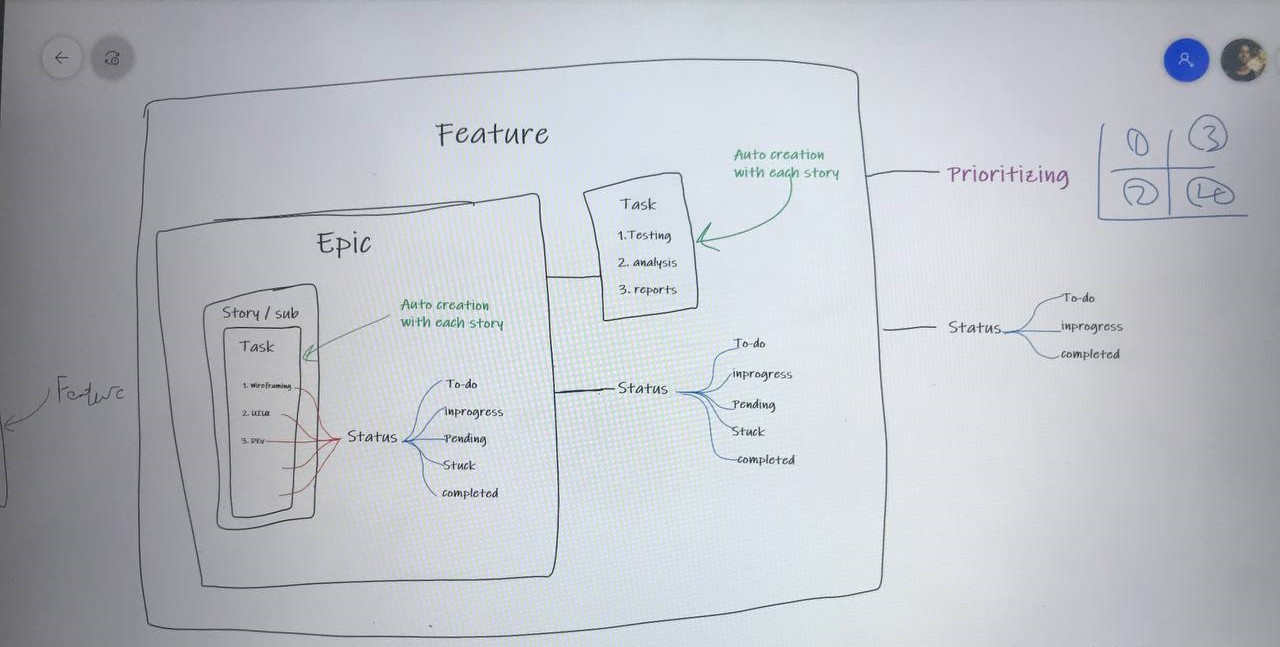
Collaboration with Teams
Facilitated cross-functional collaboration, ensuring the seamless integration of design, development, and business strategies.
- User-Centered Product Management: Continued to champion user-centricity, integrating gamified elements to enhance user experience and retention.
4- Market Adoption and Growth Preparation:
-
-
- Educational Initiatives: Introduced features to educate users, fostering trust and addressing the unique challenges posed by the lack of technology culture.
- Gamification Impact Assessment: Conducted analyses on the impact of gamification, ensuring it aligns with user preferences and enhances overall platform engagement.
- Educational Initiatives: Introduced features to educate users, fostering trust and addressing the unique challenges posed by the lack of technology culture.
-
Design
1- Impactful User Stories and Flows:
- I leveraged Atlassian Jira extensively for effective product management. We utilized it to write user stories, manage epics, plan and execute sprints, and keep track of different versions and releases. Jira’s flexibility and customization were instrumental in aligning the tool with our project’s unique workflow. This experience showcases my proficiency in utilizing key project management tools like Jira, a valuable addition to my portfolio.
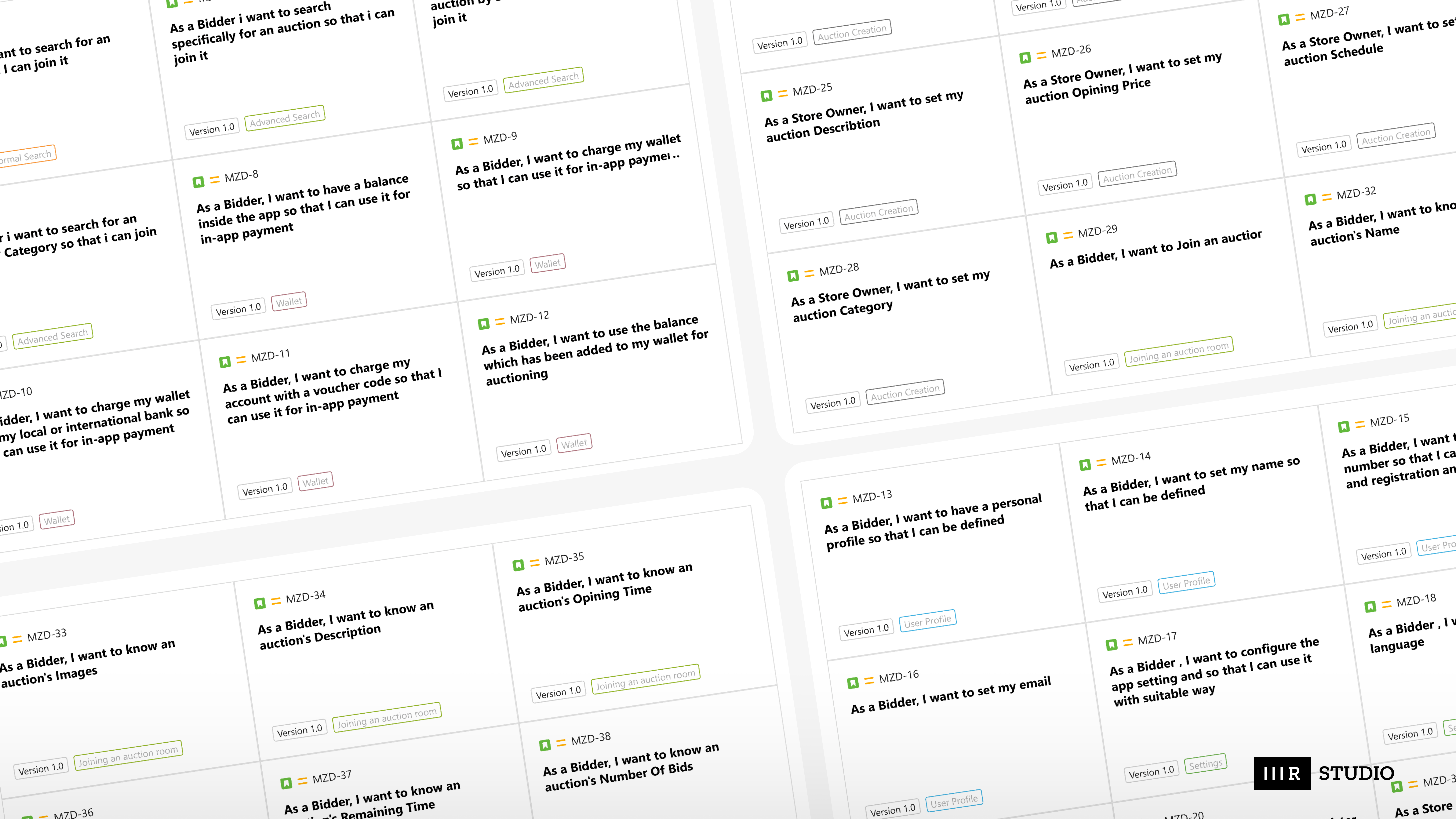
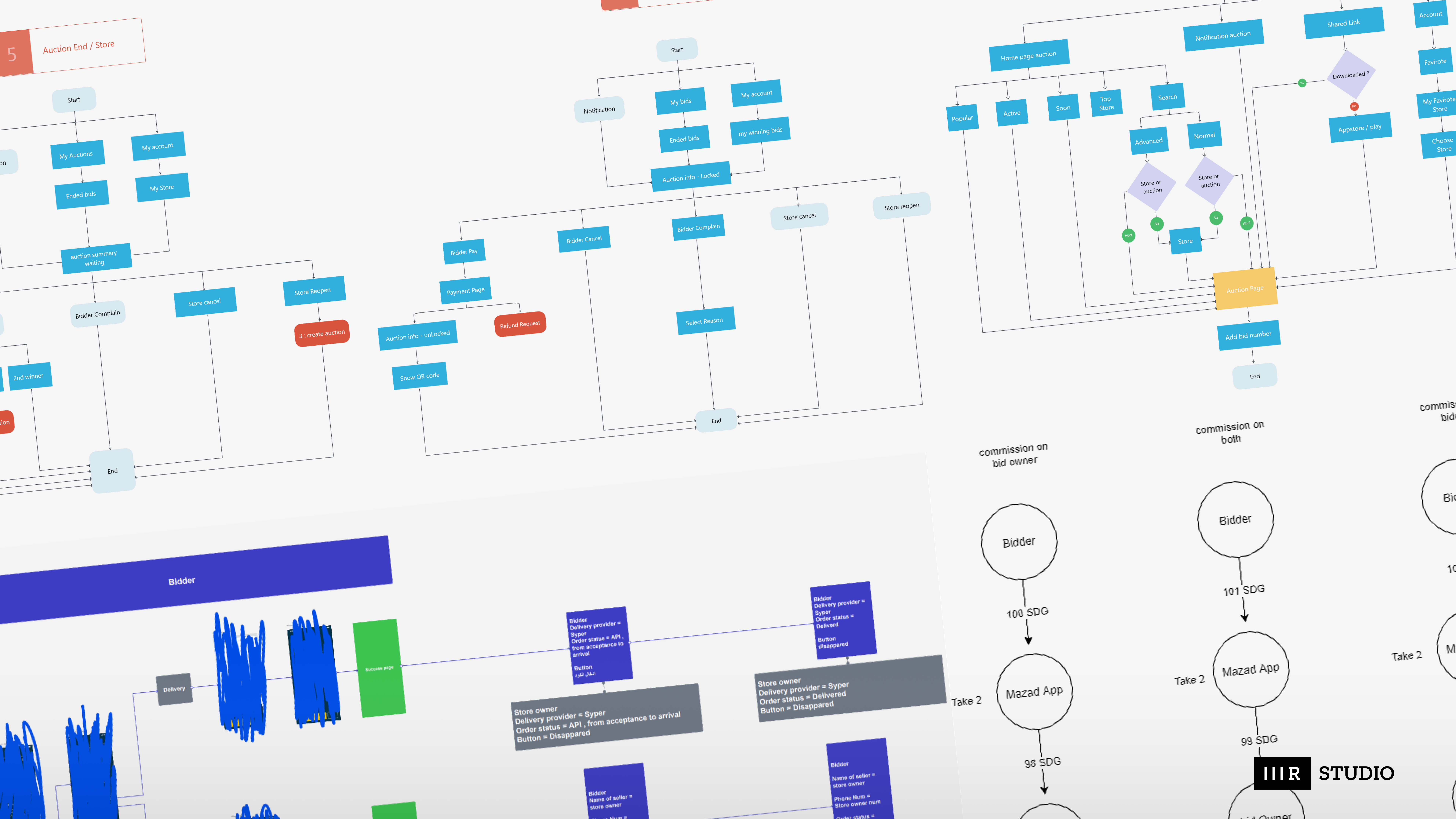
2- Visuals

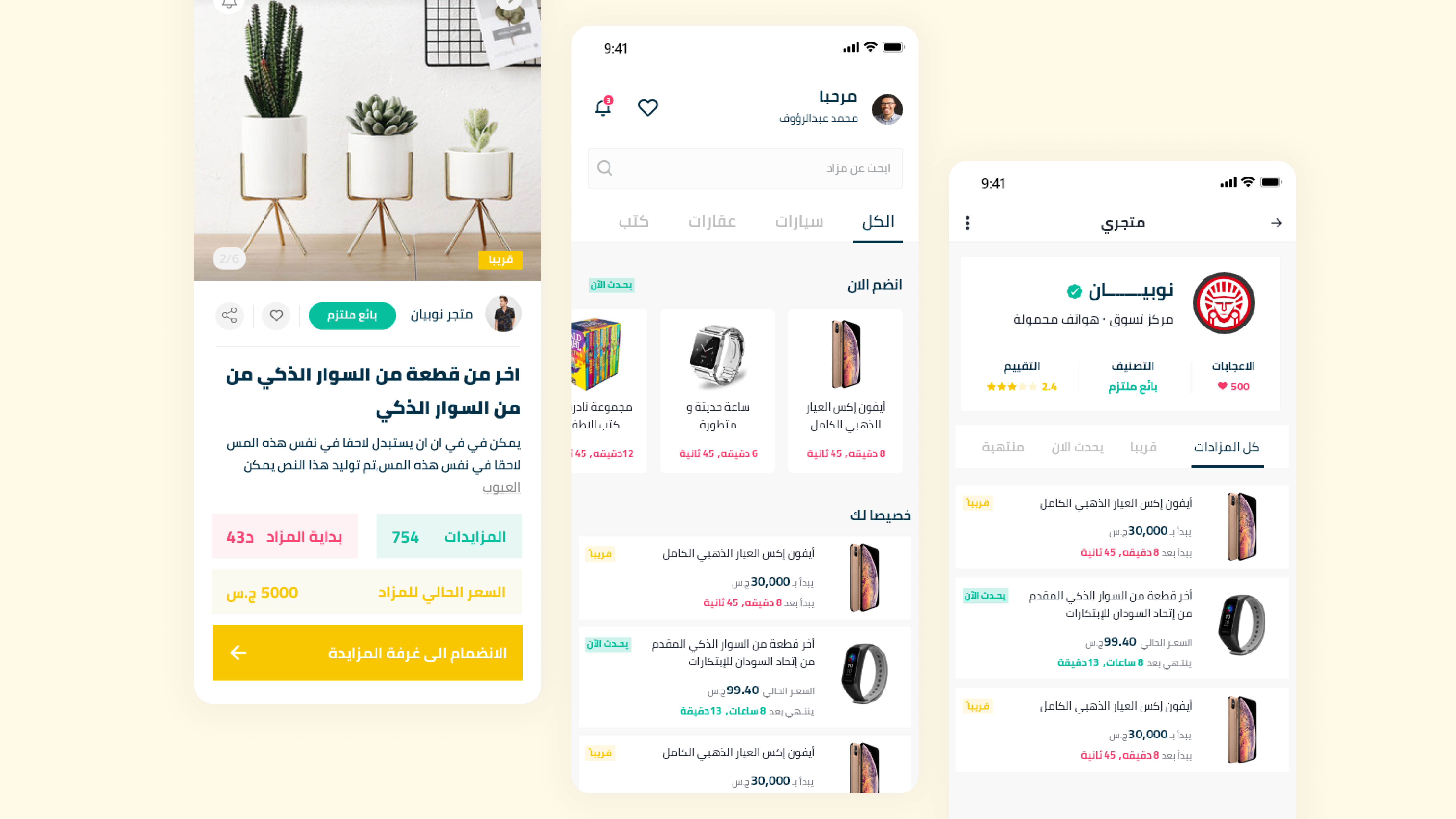
3- Gamification in Action
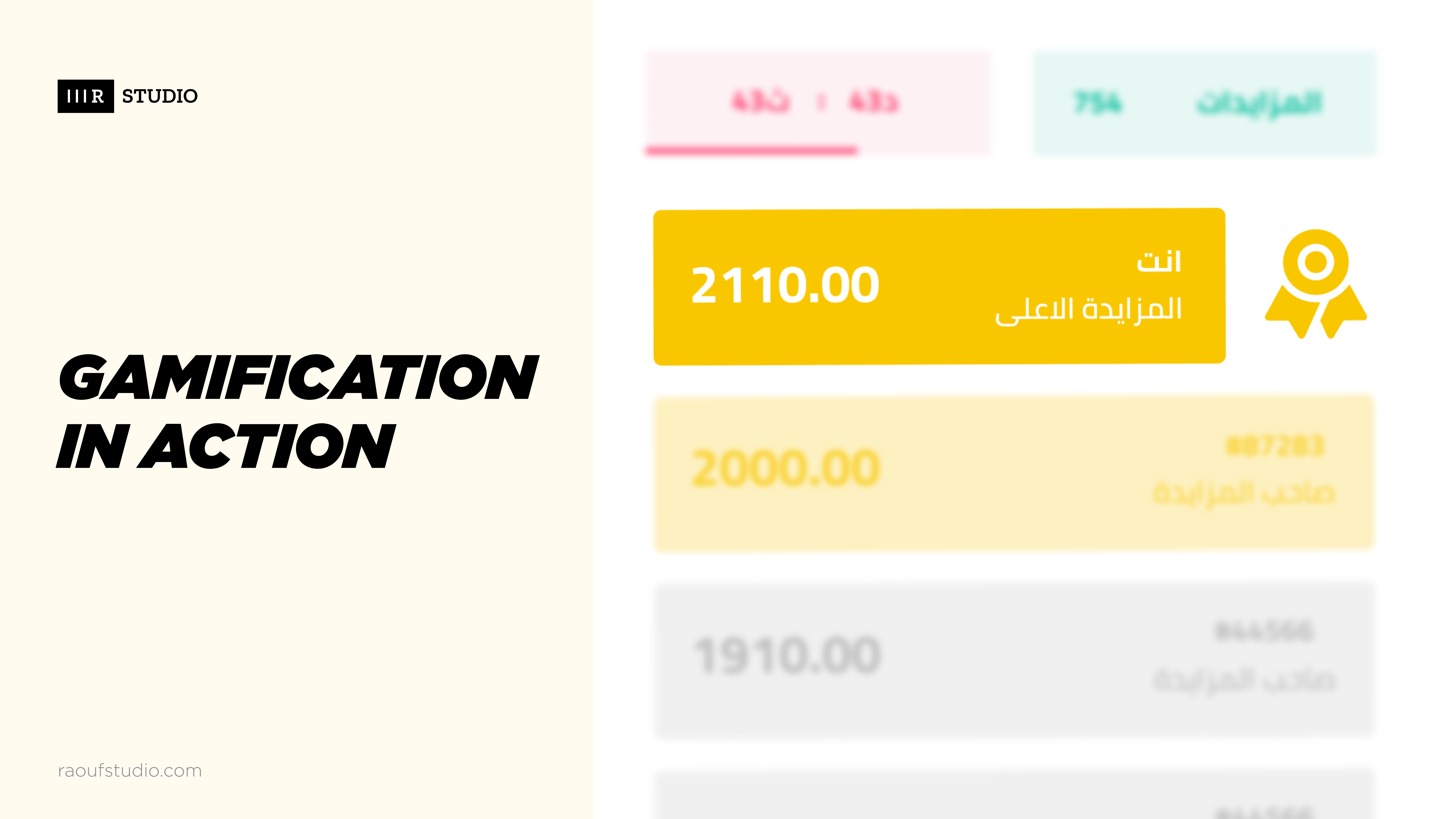
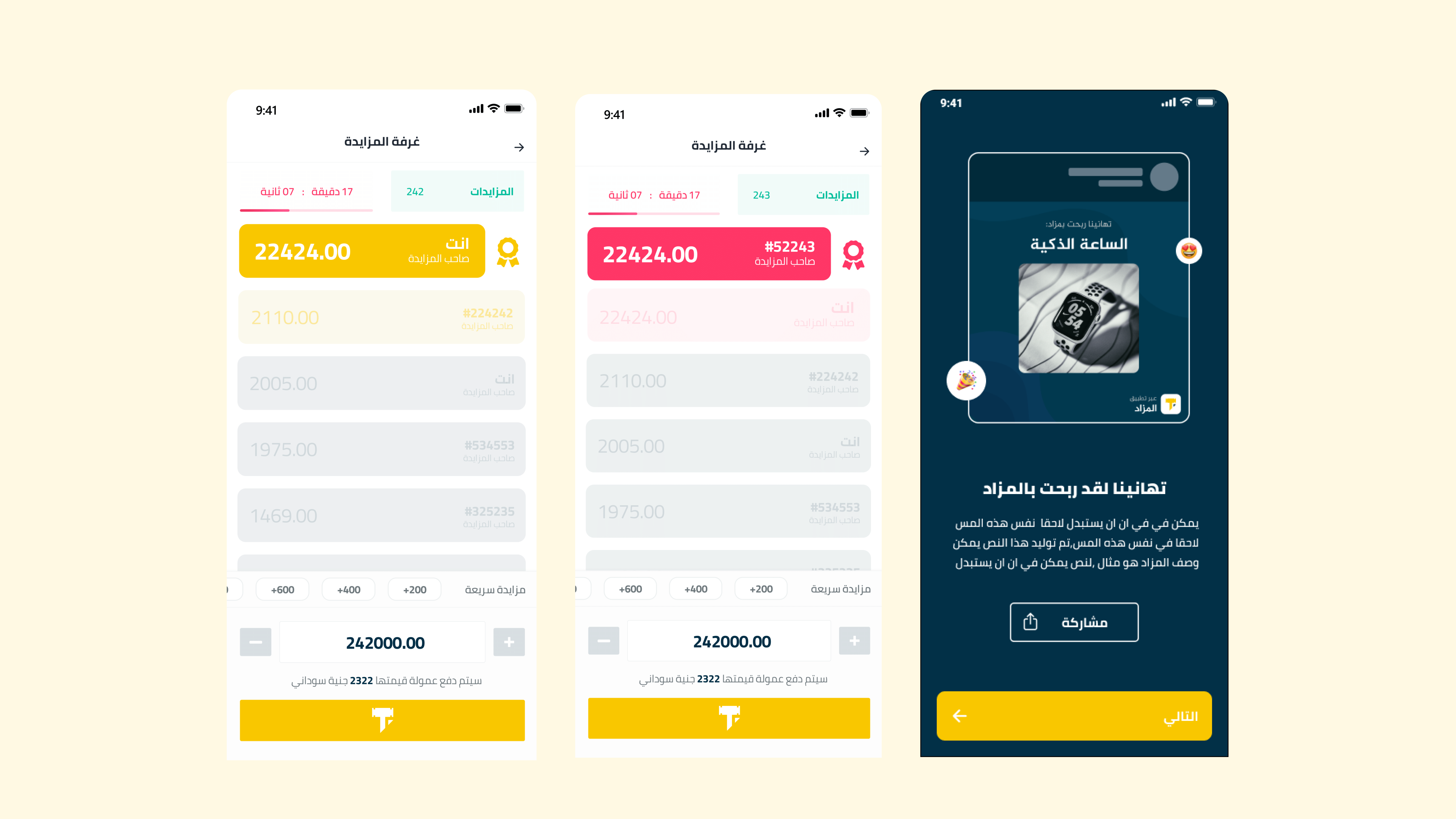
captivating user experience by strategically incorporating gamification sounds. From the excitement of joining the auction room to the thrill of winning, each interaction, including becoming the highest bidder and receiving outside app notifications, was enriched with carefully crafted auditory cues.
Hypothesis statement
Our hypothesis posits that the strategic integration of gamification elements, including badges, rewards, and leaderboards, will significantly enhance user engagement and overall user experience. By introducing gamified features, we anticipate an increase in user interaction and participation, addressing potential challenges associated with the limited technology culture in Sudan. We believe that gamification will serve as a motivational tool, fostering a sense of community and encouraging users to explore and utilize the platform more frequently. Through pre-launch testing, we aim to validate this hypothesis, ensuring that the gamification strategy aligns seamlessly with user preferences and contributes positively to the anticipated success of Al-Mazad in the Sudanese market.
Results
In the journey through the AlMazad UI/UX and gamification design, several key reflections and considerations emerge:
1- Learning from Research
- The research phase provided valuable insights into the unique challenges posed by the limited technology culture in Sudan. Understanding user behaviors and expectations set the foundation for culturally sensitive design solutions.
2- Anticipated Impact Metrics
- While the platform hasn’t launched, hypothetical success metrics include increased user engagement, positive feedback from testing, and a user-friendly auditory landscape. These would contribute to the overall success of the project.
3- Adaptability in Design
- Flexibility in design iterations allowed for strategic adaptation to evolving requirements. This approach ensures that the final product aligns seamlessly with both user needs and business goals.
4- Strategic Preparation for Launch
- The design solutions, including gamification elements, were crafted with the intention of creating a platform that is not only visually appealing but also strategically positioned for success upon launch.
4- Handling Project Variabilities
- Recognizing the non-launch context, the project focused on establishing a robust foundation for future success. This included aspects such as intuitive user flows, design system, and a visually appealing interface.
Conclusion
Recognizing the non-launch context, the project focused on establishing a robust foundation for future success. This included aspects such as intuitive user flows, design system, and a visually appealing interface.
Explore AlMazad's Features
Explore the attached document for an in-depth look into AlMazad’s features and operational intricacies, providing a comprehensive understanding of the platform’s functionality and value proposition

